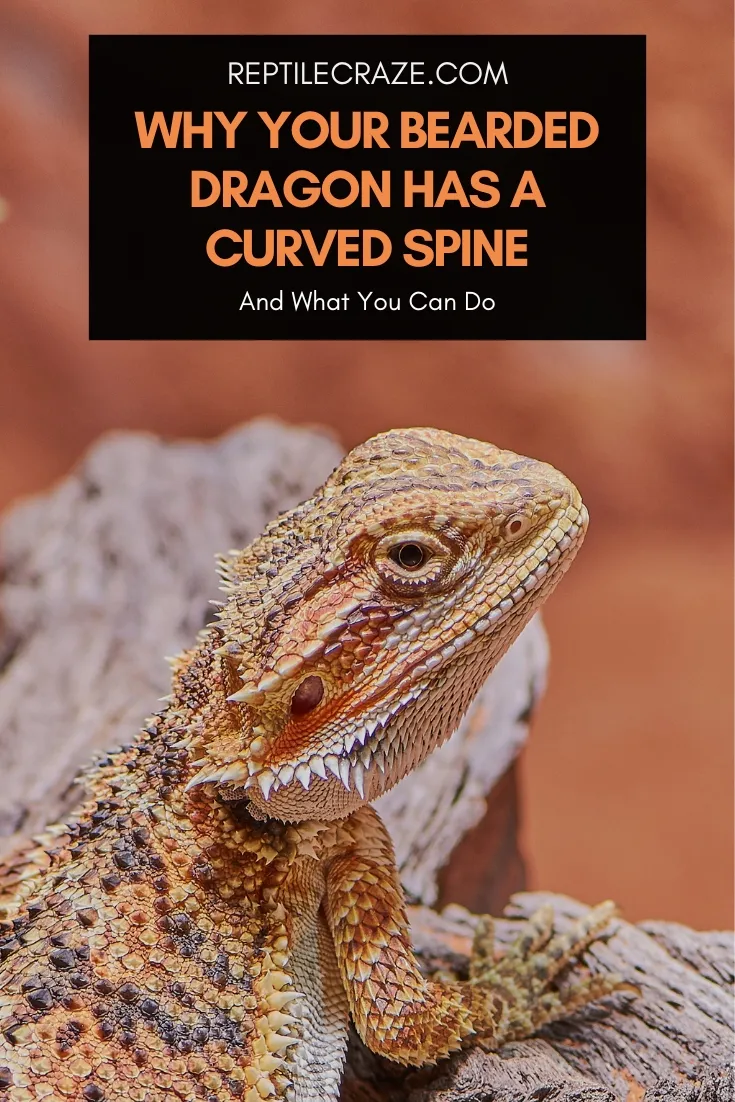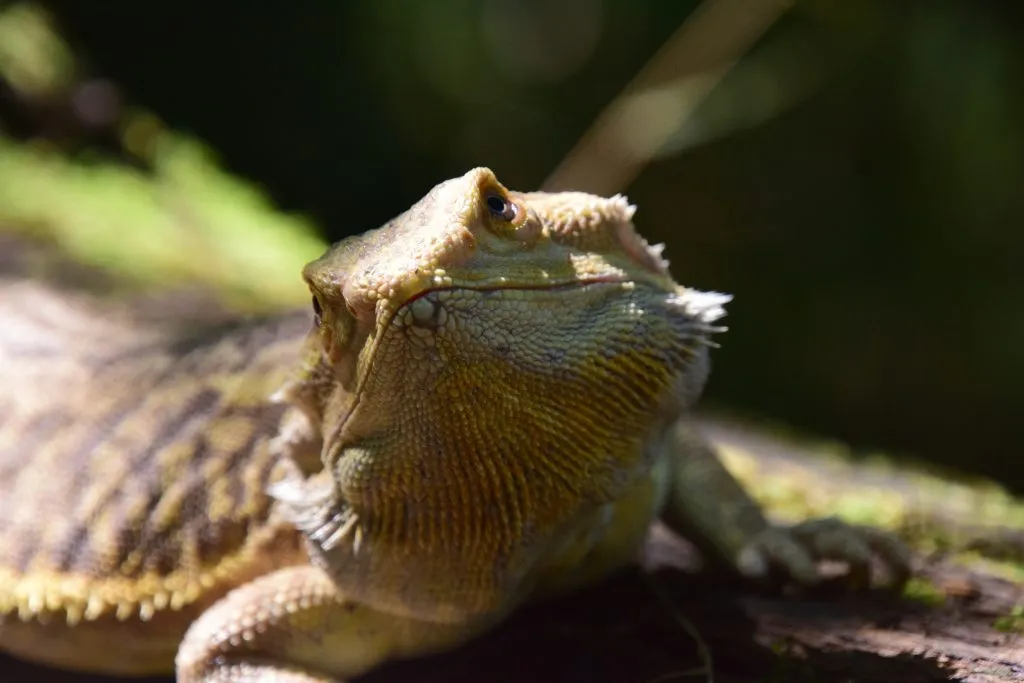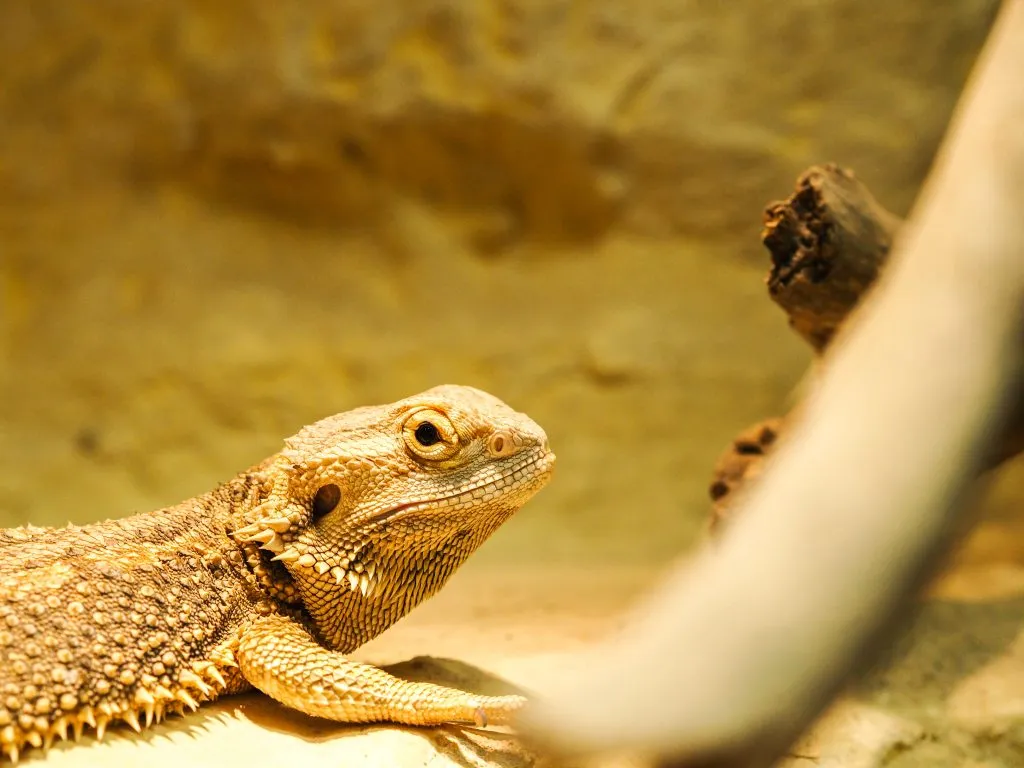
It’s not uncommon for bearded dragons to get curved spines – a dire situation with even worse consequences. However, detecting and treating it in time can certainly prevent things from escalating.
Curved spines in bearded dragons is a condition where the spine becomes S or C-shaped. The most likely causes are metabolic bone disease, a birth defect, or an injury, and while most of these aren’t completely reversible, supplements and intensive care can prove quite beneficial.
This article will explain in detail why curved spines are formed, how it affects bearded dragons and their quality of life, and what you can do to prevent it or help your pet deal with it. Read on!
Table of Contents
What Curved Spines in Bearded Dragons Look Like
Below are some videos that show what different types of curved spines can look like:
What Causes Curved Spines In Bearded Dragons?
Curved spines or scoliosis can occur due to three main reasons:
1. Metabolic Bone Disease
Due to a lack of calcium and insufficient UVB lighting, bearded dragons can easily have metabolic bone disease or MBD – the most common cause of curved spines.
This condition makes the bones soft and bent and causes the body structure to deform, which is how curved spines happen.
2. Trauma
Often, bearded dragons, especially those that are allowed to roam freely from time to time, can fall from heights or get into fights with other bearded dragons or other pets and injure themselves, causing fractures, swelling, and even subluxation or dislocation of the vertebrae.
This could also result in a curved spine, which is more like a hump (known as kyphosis) rather than a C or S shape. So it still looks curved but from a sideways view.
Tip: A hump along the spine could also mean impaction – a potentially fatal condition where large
food items or substrate get stuck in the digestive tract. If your bearded dragon hasn’t pooped in a while, read our article on that here!
3. Birth Defects
In rare cases, bearded dragons can have birth defects, which may include having a deformed spine. Curved spines can also occur during their developmental stage due to improper husbandry and diet.
How Curved Spines Affect a Bearded Dragon’s Life

Unfortunately, a curved spine is irreversible and a permanent deformity. This is especially the case when MBD is the cause because scoliosis only occurs in severe and advanced stages of the disease.
Beardies with such deformities can still have a healthy life, though, as MBD is a very manageable condition, if not completely treatable.
They may not be as active and mobile, and the deformities can prevent them from climbing or jumping about, but they can definitely lead a relatively normal life when given extra care and special attention.
Tip: timely diagnosis is key to treating MBD and partially reversing its effects. Observe your pet for any signs of lethargy, tremors, and thin limbs, as these are some early signs.
However, when curved spines occur due to an injury, your bearded dragon can suffer from paralyzed limbs and be in a great deal of pain. Nerve damage might cause twitching in limbs and paralyzed intestinal walls leading to blockages.
In this case, your vet may perform surgery and fuse some bones, or advise complete “bed rest”.
Over a long recovery period involving physical therapy and special care, your pet might regain some or most of its mobility and move about on its own with little to no pain.
Note: many beardies have been known to live happy lives even with permanently paralyzed limbs by using custom-made devices similar to wheelchairs that help them move about.
But a lot of this depends on the injury and its severity, and sometimes euthanasia is advised rather than subjecting them to lifelong suffering with paralysis and being on painkillers.
Treatment and Prevention

Curved spines may not be reversible, but treating the underlying cause is essential. No matter the issue, any deformities along the back of your lizard need urgent medical attention.
Your vet will perform x-rays, physical exams, and run blood tests to determine the cause, and may perform surgery in case of a broken spine. Either way, the treatment plan will involve you nursing your beardie’s bones back to health by providing:
- Oral/injectable calcium supplements
- Vitamin D3 shots
- Calcitriol to reabsorb calcium
- Calcium-rich foods like papaya and squash
- Painkillers or antibiotics
- A short separate cage with no rocks or tall sticks to prevent injuries
How To Prevent A Curved Spine In Your Bearded Dragon
As with anything, prevention is better than cure. Here’s what you can do to avoid spinal deformities in the first place:
- Ensure a nutrient-rich diet with calcium (Read our beardie care guide)
- Avoid phosphorus-rich foods like spinach
- Have a good quality UVB light (We show you the best UVB lights here)
- House your beardie separately to avoid fights and injuries
- Avoid carrying it around and rough handling (Read how often you should handle here)
Final Thoughts
Any spinal deformity requires an urgent visit to an experienced exotic animal vet. By treating it in time, your beardie has a higher chance of regaining any lost mobility and living a normal life.
- Enchi Ball Python: A Unique and Stunning Morph of Python regius - March 27, 2025
- Emerald Tree Monitor: The Enigmatic Green Guardian of the Rainforest - March 26, 2025
- The Egyptian Cobra (Naja haje): A Fascinating Serpent - March 25, 2025
